Plymouth recognized that while many people were passionate about their desire to own a muscle car, a group of individuals craved this level of performance with a touch of luxury. It was out of this thinking that the GTX was born. Here was a car that could hold its head high in the best of company but provided luxury features that set it apart from vehicles like the Road Runner. This 1968 model presents beautifully. It features its original 440ci V8 under the hood, and it is also looking for a new home. It is located in Brandon, Florida, and has been listed for sale here on eBay. The bidding has reached $30,100, but this figure remains short of the reserve.
The GTX is finished in Code Q Electric Blue and features the Black bodyside accent stripes. It is a two-owner classic, and the seller admits that the vehicle received a repaint in its original color back in the 1980s. This still presents well today, with no signs of any patchiness or matte areas. The exterior shines beautifully, from the paint, through to the chrome and the flawless glass. The panels are free from dings or dents, and there is no evidence of any rust in the body. The owner doesn’t mention any problems with the vehicle’s underside, and the lack of visible corrosion in areas like the engine bay gives us cause to be quietly confident. The only thing that has caused me to raise my eyebrows is the size of the gaps on both sides of the vehicle between the leading edge of the door and the front fenders. They appear to be the same on both sides, but they are far larger than any other panel gaps on the vehicle. I’ve compared the supplied photos with shots of other cars, and these look different. It may be something that requires investigation, or it may be nothing at all. I’m not suggesting for one moment that there is anything underhanded going on here, but it’s always worth the effort to ask questions for your own peace of mind.
Plymouth offered the 1968 GTX with a choice of two engines, and even the entry-level unit that we find in this car’s engine bay was no wimp. It is the 440ci “Super Commando” V8 that punched out an impressive 375hp. With a 3-speed TorqueFlite bolted to the back of it, feeding those ponies to a 3.23 Sure Grip rear end as we find in this car, it could demolish the ¼ mile in 14.2 seconds. This GTX is a numbers-matching vehicle, and the original owner also chose to order it with power steering. However, it is a car that comes with its own level of frustration. The owner emphasizes its originality, right down to the original plug wires. The engine bay presents well for a vehicle of this age, and the owner doesn’t make any bold or outrageous claims about its odometer reading. The one thing that he fails to do is provide any information on how well the GTX runs or drives. It is worth noting that while we don’t receive that information, the owner holds significant documentation. It includes the original Window Sticker, Broadcast Sheet, Owner’s Manual, and even the Chrysler Plymouth Division Car and Equipment Price Books.
For an unrestored classic with an odometer that has rolled over, the interior of this Plymouth presents very well. There are a few flaws and marks on some of the hard trim and plastic components, but nothing is screaming to be replaced if the vehicle is considered an original survivor. The upholstered surfaces appear to be free from physical damage, while the dash and pad look good. I can’t spot any problems with the console, and the same seems to be true of the carpet. The original owner ordered the GTX with an AM radio/8-track player, and this looks to be intact. There is one inconsistency with this interior, and once again, I need to gain some feedback from our readers for clarification. The owner states that the car is fitted with a full gauge package, including a tachometer. When I first looked at this photo, my impression was that the tach mounted on this dash wasn’t a factory item. I then wondered whether Plymouth might have produced a few cars with this type of tach before or instead of the one located to the right of the temperature gauge within the cluster itself. However, I could not find any evidence or photos to support this, so I have decided that this tach is an aftermarket addition. As always, if I’m wrong, I’m happy to be corrected. Otherwise, the interior is unmolested and would not cause its owner any shame if they took the GTX to a Cars & Coffee as it stands.
This 1968 Plymouth GTX is an attractive car that comes with some excellent documentation. Taken at face value, it appears to have a lot to offer potential buyers. This leads us to the vexing question of potential value. If you were to rely solely on resources like NADA or Hagerty, the expectation is that this car should sell for a figure beyond $40,000. I wouldn’t rule out that number, but I also wouldn’t be surprised if it sold for less. There have been some recent sales where the prices have been lower than might typically be expected. A few weeks ago, I wrote about this 1968 GTX that was also up for auction. I tracked that listing, and while the car failed to sell on the first attempt, the owner relisted it, and it sold for $28,200. I believe that this is a better car, so it will be interesting to keep an eye on this one to see what transpires.
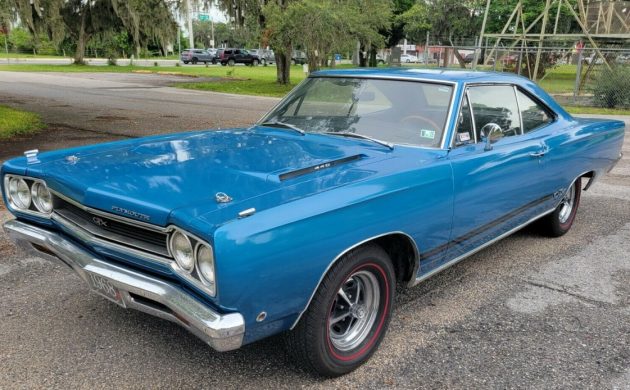
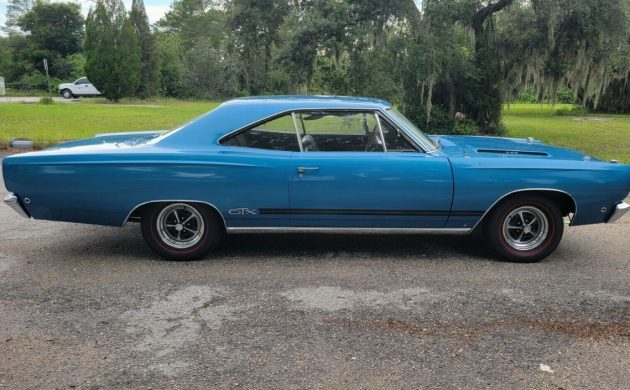
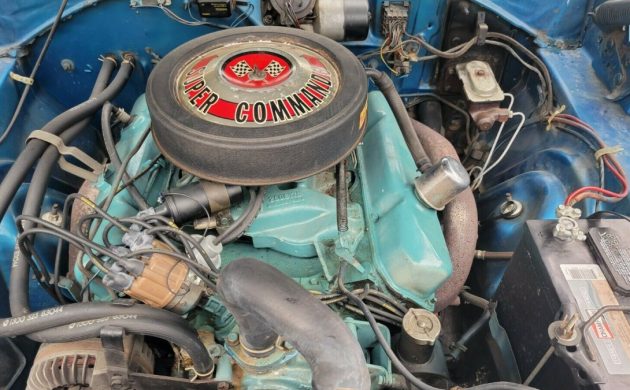
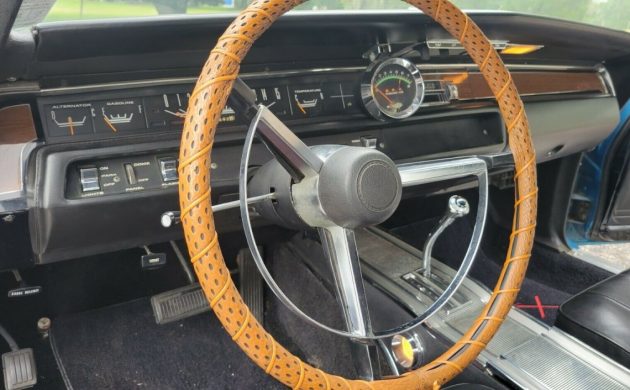
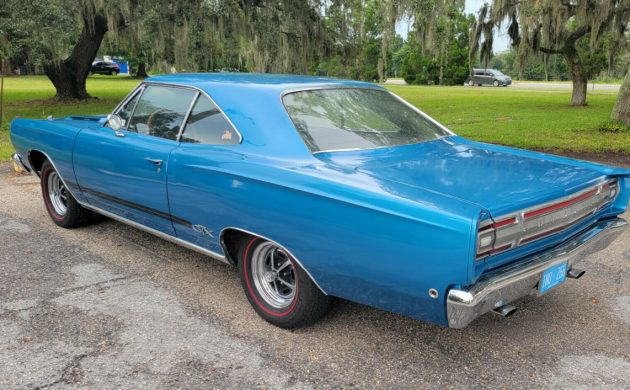


3.23 is too short for such engine.crazy
it should have a 3:90 rear gear
It would be 3.91 in a Mopar 8 3/4, a 3.90 is a Ford gear ratio.
…and a 3.91 is way shorter than a 3.23.
Not at all for a car that is 100% street driven. With the torque of the 440 a 3.23 is actually a good compromise. You’d grow pretty tired of a car that can only travel at 60 mph while turning 3500 rpm. Not fun.
The 3.23’s are a great street gear. For a car like this, with a high torque big block they are a good choice for the track. They let the torque of the engine pull you through the quarter mile and will likely let you cross the line at the top of second gear. Me and several friends that bracket raced our street driven cars would specifically choose gears in this range, 3.20, 3.23, 3.31 and 3.36 depending on the make of car. To reflexively assume a shorter gear is a better choice is a common misconception, especially when you factor in drivability.
Steve R
You have no idea what a “short gear” even is. A “short gear” would be a 4.56, 4.88, or 5.13 for example. A “tall gear” (or “long gear” as some call it) would be a 2.24, 2.76, 2.94, 3.08, etc. You should, at the least, know what you’re talking about before you make stupid comments.
Don–Angry again today?
3.23 is too short for such engine.crazy…25 miles per1000 revs…OMG
My dad tried a few different rear ends in his 440 powered 41 Plymouth and stuck with the 3.23 as the car just seemed happy with it. It would pull 13.2 in the quarter consistently ( it weighed just under 4500 lbs) and was manageable in town and loved the freeway. He daily drove that car for almost two decades like that.
WTF are you even talking about? You don’t even understand the difference between a “short gear” and a “tall gear”. Hint: The shorter the gear, the bigger the number!
Yup–I guess so.
I always think of the movie “Tommy Boy” when I read or hear about GTX’s. This one is not the same year as the one in the movie, though.
3.23 is a great (standard) choice. If you only want to go 1/4 mile at a time, sure, 3.90 or 4.11, but staying happy on the highway is another matter. The tach? Aftermarket for sure. If you got the standard dash, you could special order a smaller tach that fit into the far right slot of the instrument cluster. I had a similar car almost half a century ago. It had the 3.23 rear end, but a 318 under the hood. The car made me happy, but I wish Chrysler had bought power steering boxes from GM or Ford, they were so much better at the time.
I’m the seller. To address a couple of your questions, I wish I had better answers. I thought the tach was stock, but quite possibly not. I don’t remember my Dad telling me he added it, but it’s been quite a while. And the door gap, that’s how they’ve always been. I don’t know why. I never notice them as being abnormal. Thanks for your time.
Pay no attention to the internet Mopar experts…they have no clue what they’re looking at or talking about. Anyone that knows Mopars will know that the tach was added on, no biggie, it’s period-correct and it’s obviously been there for a looooong time. Also, the gear ratio is plenty short enough. Even with a 3.23 you will have a hard time driving it on the highway at today’s speeds. At 75 mph that 440 will be wound up. It, truthfully, needs about a 2.94 in it if you’re doing a lot of highway driving but, alas, the 3.23 is the best compromise (which is why that is what 90+% of Mopar performance cars were built with when equipped with an 8 3/4 differential).
The factory tach for the horizontal speedo (1968 only, 120 on Road Runner, 150 on GTX) goes on the slot to the right of the speedo. The optional clock would be there too. Now, gearing…
My dad used to talk about “flat land gears” and “mountain gears”. Cars built for Ohio will struggle climbing the mountains. The 71 Fury 440 cop car I owned came from Ohio and had 2.76 gears. That gave it longer legs to run offenders down on the flat highways of Ohio. It struggled on the hills while the 69 Charger R/T drove like a normal Pittsburgh car
The best Road Runner/GTX design IMHO.
What a beautiful car.
Always wondered about the Super Commando, though. Does that mean you have to skip the tidy whities AND socks?
Nothin but a hat on LOL
It means you have a Fairbairn-Sykes knife in the car, AND a sub-machine gun.
I’m pretty sure the term is “tighty whities”, lol…but we’ll give you an “A” for effort though.
Mine had 3:23 posi with T.F. trans, and it would light up both back tires off the line anytime.
Mine had 3:23 posi with T.F. trans, and could light-up the rear tires from a stand still, anytime!
Back in 68-69 I worked at a place where one guy had both a 68 GTX and a RR. Other than the color (his was yellow) and the tach, it looked like this one. Never got to ride in it, but I did have a chance to look at it in the parking lot. Loved the way it sounded when he left, it had a rumble that gave you chills.
One of the best looking Mopar’s IMO. This one looks great!
When I taught auto shop, I had a student who had one of these. His neighbors were complaining because he would daily light up the tires. Very nice cars.
Lived near a small town in Michigan that had one Automatic and one 4 Speed used as police cars. There were occasions when one of the younger Cops would run against the locals on Saturday night down the road from me
That must’ve been fun to watch. How well did the cop car do?
Most guys let him win because he was known to write a ticket if he lost!
I had a 71 Fury 440 cop car that went through the lights at National Trail Raceway at 15.99@99 mph.
b5?
No. QQ1.
Well that explains that and I did not know that. My 69′ Super Bee was B% and even in the pic’s I could tell it was quite right.
Thanks For The Info.
A year too early for B5/EB5, which came in ’69 and replaced both Electric Blue and less flashy medium blue that they used on the larger cars.
Well that explains that and I did not know that. My 69′ Super Bee was B5 and even in the pic’s I could tell it was quite right.
Thanks For The Info.
Yep, the factory tach would be in the dash gauge panel ( look in back of the “added on tach”, see the blank area in the dash? )
He’s been trying to sell this pieced together GTX for awhile now – it was featured here as well, If your looking for big money better have all the factory GTX pieces as they should be.
Who are you talking about? Your post doesn’t make sense.
Shawn, You’re the owner/seller of the GTX, right?
Maybe you can have Stillrunners come by and point out all the non-factory GTX parts on *your* car. :- ) :-)
You’re libeling people you know zero about.
This sure is a beaut.
Not a fan of the redline tires but opinions are like backsides, everyone has one.
Dave, I can’t confirm, but I’m pretty sure he bid on it on Ebay. Then he asked me for the reserve, which I wouldn’t tell him. Then he asked me for my lowest cash price, which I obviously wouldn’t divulge. He got mad when I told him that’s not now it works and asked for his best offer….
Fun question and answers here. I have a question about the color of engines. This one has the blue engine which I have always maintained the 68’s and older had. I had a very active discussion with a good friend of mine and he didn’t believe that theory. Anyone here know the correct answer?
Thanks,
No that’s not a blue engine it’s turquoise.
The Big blocks were blue the raised Big blocks were turquoise up until 1968.
After 68 I believe all raised Big blocks were painted Orange.
I’ve been discussing this with a few people also. They tell me that the hi po motors were painted Orange.